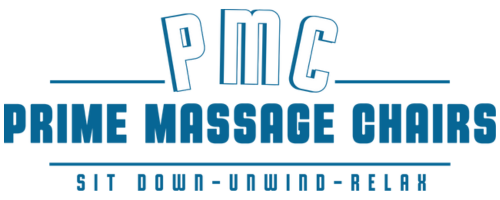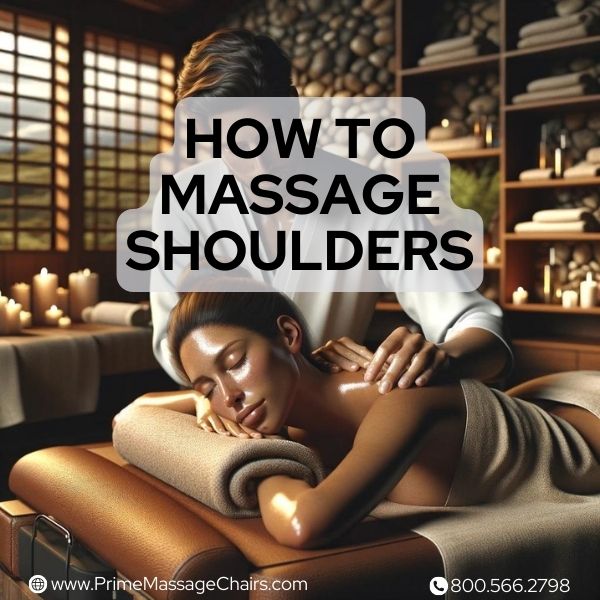
How To Massage Shoulders
If you're wondering how to massage shoulders this article is for you. Massaging your shoulders can relieve muscle tension and improve flexibility.
This guide will teach you simple techniques to massage shoulders for pain relief and relaxation.
Read on to learn how.
Understanding Shoulder Muscles
Understanding shoulder muscles is crucial for effective massages. Shoulder muscles play a vital role in arm movements and support.

However, it's always best to consult a professional for personalized advice, especially in cases of chronic pain or injury.
Definition of a Shoulder Muscle Knot
A shoulder muscle knot refers to a tight, painful area within the muscle fibers. These knots develop due to muscle tension, overuse, or strain.
While commonly recognized in massage therapy, the exact nature and treatment of muscle knots are subjects of ongoing research, highlighting the importance of professional assessment.
They feel like firm, inflexible bands beneath the skin.
Shoulder muscle knots restrict movement and cause discomfort. Common locations include the upper trapezius, levator scapulae, and rotator cuff muscles.
Massage therapy targets these knots, improving blood flow and reducing pain.
Massage, including techniques that target areas often identified as trigger points, can contribute to pain relief and muscle relaxation.
While the concept of trigger points and their treatment is widely accepted in massage therapy, it's important to recognize that scientific consensus on their nature and the mechanisms behind their treatment is still evolving.
Relief from trigger points may involve a variety of factors, including mechanical, neurological, and psychological responses to massage.
Importance of Shoulder Muscles
Shoulder muscles play a crucial role in stabilizing the shoulder joint and enabling arm movement.
They support the weight of the arms, facilitate daily activities like reaching and lifting, and contribute to proper posture.
Strong shoulder muscles reduce the risk of injury and chronic pain conditions like rotator cuff tears or frozen shoulder.
While massage can aid in maintaining muscle flexibility and reducing tension, combining it with regular exercise and strength training is essential for promoting overall upper body health and preventing injuries.
Benefits of Shoulder Massage
Shoulder massage is widely recognized for its potential to relieve muscle tension and stiffness, and it may improve circulation and enhance the range of motion in the shoulder area.
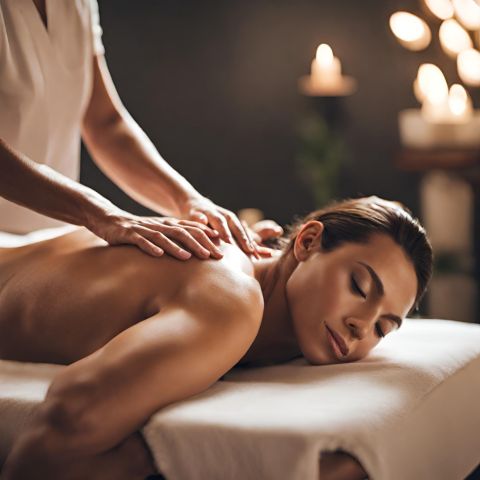
However, individuals may experience varying degrees of benefit, and it's recommended to combine massage with other treatments like physical therapy for comprehensive care.
Relieving Tension in the Shoulder Muscles
A shoulder massage relieves tension in the shoulder muscles by increasing blood circulation.
This improved blood flow is thought to facilitate the delivery of oxygen and nutrients and may assist in the body's natural process of removing metabolic waste.
Massage therapy may help alleviate pain and improve shoulder function, potentially by addressing muscle knots and soreness.
Massaging shoulder areas may support circulation and promote relaxation, potentially contributing to a reduction in inflammation.
Shoulder massage improves flexibility and range of motion in surrounding joints like the neck and upper back.
Massage therapists utilize techniques like effleurage, petrissage, and friction to relax contracted shoulder muscles.
Health and Wellness Advantages
Shoulder massages bring abundant potential health benefits beyond relieving muscle tension.
Improved circulation aids nutrient and oxygen delivery to muscles, preventing injury.
Massage therapy can contribute to pain relief and relaxation through several mechanisms, including improving circulation, reducing muscle tension, and modulating the nervous system.
While these effects are supported by some research, individual responses can vary, and further studies are ongoing to fully understand these mechanisms.
Furthermore, shoulder massages target specific muscles surrounding the shoulder area.
Massaging these muscles relieves stress and tension, and reduces tightness.
How to Give a Shoulder Massage
Massaging shoulders involves strategic techniques. Apply gentle pressure using your palms and fingertips.
Techniques for Massaging Surrounding Areas
The neck and upper back areas often hold tension related to shoulder problems.
Massage these regions for shoulder relief.
- Apply pressure along the upper trapezius muscle. Utilize fingertips and knuckles to target knots.
- Massage the levator scapulae muscle. It connects the neck vertebrae to the shoulder blade.
- Work the rhomboid muscles between the shoulder blades. Use flat hands or tennis balls.
- Extend strokes down the spine to the lower back. This relaxes accessory breathing muscles.
- Gently knead the chest area near the shoulders. Avoid excessive pressure on breast tissue.
- Manipulate forearm muscles like the brachioradialis. They connect to shoulder rotator cuffs.
Massaging surrounding areas promotes overall relaxation and shoulder tension release.
The next section covers specific shoulder massage techniques.
Steps for an Effective Shoulder Massage
Massaging shoulders effectively relieves tension and potentially improves circulation.

Here are the steps for an effective shoulder massage:
- Apply massage oil or lotion to the shoulder area for smooth strokes.
- Use your thumbs to apply firm pressure in circular motions on the shoulder muscles. Move from the neck down towards the arm.
- Knead the shoulder muscles using your knuckles and the heel of your palms. Work on the trapezius, deltoid, and rotator cuff muscles.
- Employ petrissage (kneading) techniques by grasping the shoulder muscles and squeezing them rhythmically.
- Perform effleurage (long strokes) from the shoulder blade towards the neck for improved lymphatic drainage.
- Stretch the shoulders gently by pulling the arm across the body while supporting the elbow with your other hand.
- Incorporate acupressure techniques by locating trigger points and applying sustained pressure until the muscle releases.
- Finish with light tapping or percussive strokes to stimulate blood flow and relax the area.
Now let's talk about partner-assisted shoulder massage techniques.
Partner-Assisted Shoulder Massage Techniques
Shoulder massage proves beneficial when performed with a partner's assistance.
Enlisting help from someone that knows what they're doing ensures proper technique application and complete muscle relaxation.
Here are some partner-assisted shoulder massage techniques:
- Have your partner sit or stand behind you. They should use their thumbs, fingers, and palms to apply pressure.
- They can knead the trapezius muscles, located at the back of the neck and shoulders, using circular motions.
- Instruct them to squeeze and release the shoulder muscles rhythmically to ease tension.
- Your partner should stroke the shoulders from the neck downwards with firm strokes.
- They can use their knuckles or forearms to apply deep pressure on tense shoulder areas.
- Ask them to gently pull and stretch your shoulders in different directions for increased mobility.
- Get them to massage your upper arms and shoulder blades for complete upper body relaxation.
Taking advantage of these partner-assisted techniques ensures a thorough and effective shoulder massage experience.
Proper communication is key for your partner to understand your preferences.
The next section covers self-massage techniques for the shoulders.
How to Give Yourself a Shoulder Massage
Applying self-massage to the shoulders offers a convenient way to relieve tension and discomfort.
Short, firm strokes with your fingertips or a massage tool can effectively target tight knots.
The key to successful self-massage lies in locating trigger points and addressing them methodically.
Experiment with different pressures and techniques to find what works best for your body.
Using Your Hands for Self-Massage
One can achieve effective self-massage using their hands. Apply firm pressure using fingertips, knuckles, or palms.
Here are some easy-to-follow tips:
- Position fingers on top of shoulders. Knead firmly in circular motions.
- Make small, deep strokes along shoulder blade edges. Press into knots gently.
- Squeeze shoulders by alternating hand placement. Move up and down muscle fibers.
- Utilize thumb pads applying pressure along shoulder blade borders. Avoid excessive force.
- Drag knuckles along upper back's bony ridges. Concentrate on sore spots.
- Flatten palms, rub shoulders vigorously in clockwise circles. Reverse direction periodically.
- Clasp hands behind neck, pull shoulders forward. Hold stretches for 20 seconds.
- Interlock fingers, place behind head. Gently pull neck forward while squeezing shoulders back.
Utilizing Tools for Self-Massage
Utilizing tools for self-massage can enhance the shoulder massage experience.
When using massage tools, it's not only crucial to start with gentle pressure but also to familiarize yourself with the proper technique for each tool.
Incorrect use can lead to discomfort or injury, so consider seeking advice from a professional or reliable instructional resources.
You can employ various objects to target hard-to-reach areas, such as:
- Foam Rollers: Roll your shoulders over a firm foam roller. Apply moderate pressure while rolling up and down. This action releases tension.
- Tennis/Lacrosse Balls: Place a ball against the wall. Lean into it, rolling the ball over the shoulder muscles. The ball's firmness penetrates deep knots.
- Massage Canes: These curved tools hook over the shoulder, enabling you to knead hard regions. Adjust the pressure to your comfort level.
- Back Buddies: These S-shaped devices fit comfortably between the back and shoulder blades. Rock side-to-side for a thorough massage.
- Massage Chairs: Invest in a quality massage chair with shoulder nodes. Customize the intensity and motions to your preference.
- Massage Guns: Percussion therapy guns deliver concentrated pulses. Use the flat attachment for overall shoulder coverage.
Proper tool utilization prevents strain. Alternate between tools for complete relief.
Stay hydrated and avoid overexertion.
Now let's talk about some great tips for massaging your neck.
Tips for Massaging Your Neck
Neck massage provides relief from tension and stiffness. Proper techniques are essential for an effective massage.
Here are some tips to consider:
- Use your fingertips to apply gentle pressure to the base of your skull.
- Massage the area behind your ears in circular motions.
- Gently knead the muscles along the sides of your neck.
- Apply pressure with your thumbs along the back of your neck.
- Tilt your head to the side and massage the muscles on the opposite side.
- Use your knuckles to apply firm pressure to any knots or tight spots.
- Finish by gently squeezing the muscles at the top of your shoulders.
- Perform neck stretches to enhance the benefits of the massage.
Massaging your neck can lead to improved flexibility and range of motion.
The next section discusses stretching versus massage for shoulder pain.
Stretching vs Massage for Shoulder Pain
Stretching and massage offer distinct benefits for shoulder pain; while stretching improves flexibility, massage relieves muscle tension and improves circulation.
Read on to learn more about the advantages of combining both techniques for optimal shoulder health.
Benefits of Stretching
Stretching enhances shoulder flexibility, reducing injury risks. It alleviates tightness, promoting relaxation and well-being.
Stretching improves range of motion, reducing shoulder pain likelihood.
Incorporating stretches into your routine offers numerous shoulder health benefits.
Proper stretching techniques target specific shoulder muscles. Gentle stretches increase blood flow, nourishing soft tissues.
Consistent stretching prevents adhesive capsulitis (frozen shoulder).
Advantages of Massage
Shoulder massage offers numerous potential benefits. It relieves pain, improves circulation, and prevents injuries.
A skilled massage therapist can target specific muscles, increasing flexibility and range of motion.
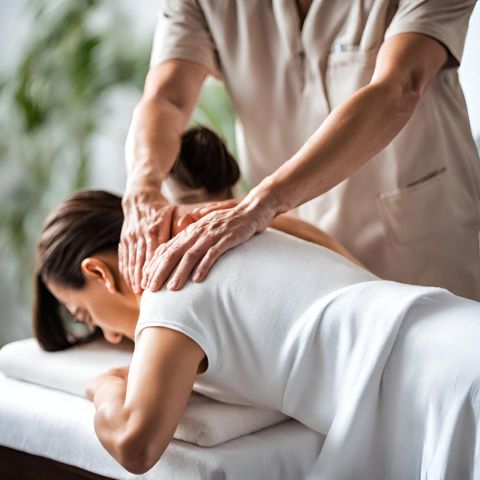
Massage also promotes relaxation, reducing stress levels and muscle tension.
Appropriate massage techniques may support the recovery process from muscle strains or minor tears by promoting circulation and flexibility.
However, it's essential to consult healthcare professionals before massage therapy for acute injuries, as certain conditions may require rest or specific treatments.
Shoulder massage provides long-term advantages too. Regular sessions maintain overall musculoskeletal health.
Good posture gets reinforced as tight muscles release their grip. Improved blood flow nourishes tissues, removing metabolic waste.
Combination of Both Techniques
Combining massage with stretching can be an effective approach to alleviate shoulder discomfort for many people.
However, the effectiveness of this combination can vary based on the individual's specific condition, and professional guidance may be needed to tailor the approach.
This integrated approach relieves acute and chronic tension, tightness, and pain.
Massage enhances blood flow, while stretching improves flexibility.
Together, they alleviate shoulder issues and prevent related problems like back, arm, headache, neck, or jaw pain.
This blend proves particularly beneficial for conditions like Ankylosing Spondylitis, Osteoarthritis, and Rheumatoid Arthritis.
Utilizing massage and stretching techniques simultaneously provides a deeper, more effective shoulder pain management strategy.
Massage relaxes tense muscles, while stretching lengthens and realigns fibers.
Advanced Shoulder Massage Techniques
For advanced shoulder massage techniques, one can explore sports massage for athletes.
This technique targets specific muscle groups used in sports activities.
Thai massage is another option for deep tissue release in the shoulder area.
Sports Massage for Athletes
Sports massage aids athletes in acute and chronic pain relief.
It yields physiological effects like potentially improved circulation, cellular function, hormonal balance, and mechanical benefits.
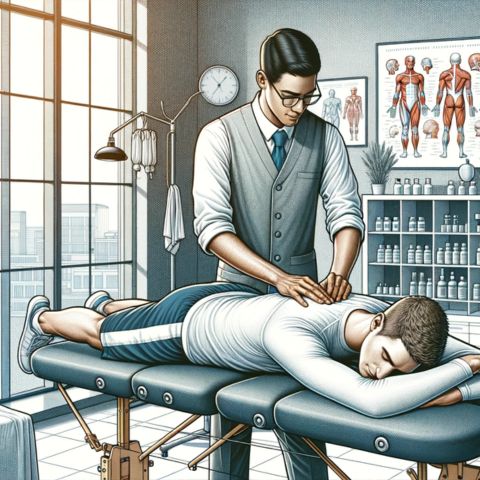
Specific techniques employed include acupressure, cupping, and myofascial release.
Athletes undergo rigorous training, leading to muscle strain and tightness.
Sports massage targets these areas, enhancing flexibility and range of motion.
It accelerates recovery from intense workouts, reducing soreness and fatigue.
Thai Massage for Deep Tissue Release
Unlike sports massage, Thai massage focuses on deep tissue release.
This ancient healing system incorporates stretching and pressure techniques.
Thai massage practitioners apply firm pressure using hands, forearms, elbows, and feet.
The technique targets tight muscles and trigger points. It helps relieve ischemic muscle tension and improves circulation.
Thai massage offers relief for chronic pain, neurological disorders, and athletic injuries.
Skilled Thai massage therapists utilize their body weight for deep tissue work.
They rhythmically compress and stretch specific areas. This action loosens adhesions and knots in shoulder muscles.
Thai massage incorporates rocking motions and leveraged stretches. These movements increase blood flow and lymphatic drainage.
The result is reduced inflammation and improved mobility.
FAQs
What are the benefits of shoulder massage?
Shoulder massage can help increase blood circulation, relieve muscle tension in the levator scapulae muscles, and improve lymphatic circulation.
Can shoulder massage help with neck pain?
Potentially, yes. Shoulder massage can provide relief for neck pain by relaxing the muscles around the cervical spine.
How do I perform a shoulder massage?
To perform a shoulder massage, use your finger muscles to apply pressure and knead the shoulder muscles. You can also use push up or press up motions.
Are there any precautions for shoulder massage?
If you have a torn rotator cuff, another injury, a chronic health condition, are taking medications that affect blood clotting, have medical devices implanted, or any other health concerns, consulting with a healthcare provider before starting massage therapy is crucial to ensure it's safe and appropriate for your specific situation.
This ensures that massage is safe and suitable for your specific health situation.
What other areas can benefit from massage?
In addition to shoulders, massage can be beneficial for the lower back, hips, pelvis, and abdominal area. It can also help with constipation and bloating.
What types of massage techniques are used for shoulders?
Common massage techniques used for shoulders include Swedish massage, trigger point therapy, and traditional Chinese manual therapy.
Conclusion
Shoulder massages offer a potent remedy for relieving muscle tension and promoting overall well-being.
Keep in mind that while massage can offer significant relief for muscle tension, flexibility issues, and certain pain conditions, individual experiences may vary.
Always consult a healthcare professional before starting any new massage therapy regimen, particularly if you have existing health conditions, injuries, or concerns.
Now that you know how to massage shoulders you can implement the techniques shared in this guide to alleviate discomfort and enhance your quality of life.
If it's right for you, make shoulder massage a routine practice for improved physical and mental health.
Disclaimer:
We do not provide medical advice. The content of this article, including text, graphics, and other material, is for informational purposes only. It is not intended to be a substitute for professional medical advice, diagnosis, or treatment. Always seek the advice of your physician or other qualified health provider with any questions you may have regarding a health condition. Never disregard professional medical advice or delay in seeking it because of something you have read in this article or on our website.
